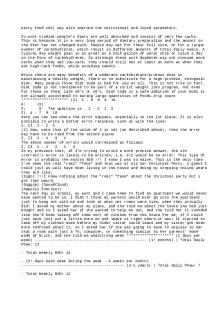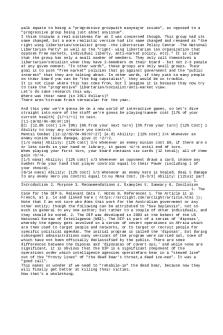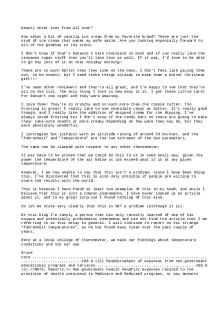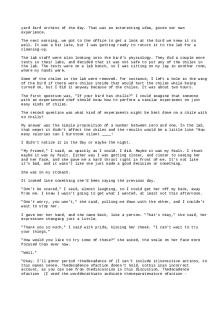Lect2 1151 grillage analysis PDF

| Title | Lect2 1151 grillage analysis |
|---|---|
| Author | Chi Fung Man |
| Course | Concrete Structures 2 |
| Institution | Royal Melbourne Institute of Technology |
| Pages | 31 |
| File Size | 2.2 MB |
| File Type | |
| Total Downloads | 83 |
| Total Views | 122 |
Summary
Download Lect2 1151 grillage analysis PDF
Description
Grillage Analysis of Girder Bridges
Course Coordinator: Dr Rebecca Gravina
RMIT University©
Lecture Notes prepared by Dr Rebecca Gravina
The challenge • In designing a girder bridge, the design actions under factored design loads are needed for the girders as well as the deck slab, which include – Bending moment – Shear Force – Torsional moment – Deflections • In a previous version of the Bridge code, design loads were calculated using distribution factors • Current version of the Austroads code AS5100 doesn’t provide distribution factors, hence • A more sophisticated analysis method is needed – Grillage analysis – Finite element Analysis
RMIT University©
Lecture Notes prepared by Dr Rebecca Gravina
Design Codes • AS3600 concrete structures • AS5100.1 Bridge design – part 1 Scope and general principles • AS5100.2 Bridge design – part 2 Design Loads • AS5100.1 Bridge design – part 5 Concrete
RMIT University©
Lecture Notes prepared by Dr Rebecca Gravina
Grillage Analysis •Structure is idealised as a number of longitudinal and transverse beam elements in a single horizontal plane, rigidly interconnected at ends •Transverse beams may be orthogonal or skewed with respect to longitudinal beams to analyse irregular decks •In a simple grillage analysis, each beam is given a flexural stiffness in the vertical plane and a torsional stiffness •A software program is used to conduct a matrix stiffness analysis to determine the design actions
RMIT University©
Lecture Notes prepared by Dr Rebecca Gravina
Spacegass has the facility to perform a grillage analysis
copyright © SPACE GASS
RMIT University©
Lecture Notes prepared by Dr Rebecca Gravina
Typical Grillage Model
copyright © SPACE GASS RMIT University©
Lecture Notes prepared by Dr Rebecca Gravina
More on Grillage Analysis
• Main Longitudinal beams are assigned the flexural properties of the full section of each girder including the deck slab • Loads are only applied at the nodes and also as concentrated loads along members • The analysis does not take into account the shear lag nor the distortion of the section • Deck slab is modeled as transverse elements of rectangular cross-section • Localised effects will need to be considered separately – eg. Wheel load being applied on the slab in between two longitudinal beams
RMIT University©
Lecture Notes prepared by Dr Rebecca Gravina
Longitudinal element
Australian Standard®, Bridge Design Part 5: Concrete Design RMIT University©
Lecture Notes prepared by Dr Rebecca Gravina
Most common prestressed concrete sections Australian Standard®, Bridge Design Part 5: Concrete Design
RMIT University©
Lecture Notes prepared by Dr Rebecca Gravina
Australian Standard®, Bridge Design Part 5: Concrete Design
RMIT University©
Lecture Notes prepared by Dr Rebecca Gravina
Modeling of Box Girder Bridges may include an additional dummy element
RMIT University©
Lecture Notes prepared by Dr Rebecca Gravina
Austroads Bridge Design Code – AS5100 2004 Part 2 Design Loads • Dead Loads • Road Traffic • Collision Loads • Water Flow • Wind Loads • Thermal Effects • Etc..
RMIT University©
Lecture Notes prepared by Dr Rebecca Gravina
Load Combinations
Australian Standard®, Bridge Design Part 2: Design Loads
RMIT University©
Lecture Notes prepared by Dr Rebecca Gravina
Load Combinations Contd..
Australian Standard®, Bridge Design Part 2: Design Loads
RMIT University©
Lecture Notes prepared by Dr Rebecca Gravina
Australian Standard®, Bridge Design Part 2: Design Loads
RMIT University©
Lecture Notes prepared by Dr Rebecca Gravina
Superimposed dead load • Dead loads likely to change during the lifetime of the structure
– Surfacing material, tram tracks, pipes, conduits, cables
Australian Standard®, Bridge Design Part 2: Design Loads RMIT University©
Lecture Notes prepared by Dr Rebecca Gravina
Traffic Loads
Australian Standard®, Bridge Design Part 2: Design Loads RMIT University©
Lecture Notes prepared by Dr Rebecca Gravina
Australian Standard®, Bridge Design Part 2: Design Loads
RMIT University©
Lecture Notes prepared by Dr Rebecca Gravina
Australian Standard®, Bridge Design Part 2: Design Loads RMIT University©
Lecture Notes prepared by Dr Rebecca Gravina
Australian Standard®, Bridge Design Part 2: Design Loads RMIT University©
Lecture Notes prepared by Dr Rebecca Gravina
Australian Standard®, Bridge Design Part 2: Design Loads
RMIT University©
Lecture Notes prepared by Dr Rebecca Gravina
Australian Standard®, Bridge Design Part 2: Design Loads
RMIT University©
Lecture Notes prepared by Dr Rebecca Gravina
Australian Standard®, Bridge Design Part 2: Design Loads
Australian Standard®, Bridge Design Part 2: Design Loads
RMIT University©
Lecture Notes prepared by Dr Rebecca Gravina
Australian Standard®, Bridge Design Part 2: Design Loads
RMIT University©
Lecture Notes prepared by Dr Rebecca Gravina
Major Design Project
• Design of the prestressed concrete girders for a bridge of given specification • You may select an I section from the standard sections of the code • Model the bridge deck using a grillage • Apply selected design loads and analyse for combined effect – both ultimate limit state and serviceability limit state • Calculate the prestress force and the tendon configuration for the girders • Perform design checks for bending strength, shear, deflections, torsion
RMIT University©
Lecture Notes prepared by Dr Rebecca Gravina
Spacegass grillage analysis - Inputs
• Input section details of RC bridge deck and PC bridge girder using section property input in Spacegass – for deck use shape builder function for rectangular element with section details – 180mm thick x 1250mm wide (use 1.25m spacing to match traffic axle wheel spacing) – For PC bridge girder use shape builder function to build I-section
RMIT University©
Lecture Notes prepared by Dr Rebecca Gravina
Spacegass grillage analysis - Inputs
• Load case inputs – Load case 1: self weight of girder and bridge deck (spacegass calculates provided you have specified section size and material type) – Load case 2: superimposed dead load – Load case 3: S1600 stationary Traffic load – lane 1 – Load case 4: S1600 stationary Traffic load – lane 2 – Load case 5: M1600 moving Traffic load – lane 1 – Load case 6: M1600 moving Traffic load – lane 2
RMIT University©
Lecture Notes prepared by Dr Rebecca Gravina
Spacegass grillage analysis - Inputs • Combination Load case inputs – Load case 10: Serviceability = total Dead load + S1600 lane 1 +0.8(S1600 lane 2) – Load case 11 : Ultimate 1.2x(total Dead load) + 1.8x(S1600 lane 1 +0.8(S1600 lane 2) ) – Load case 12: Serviceability = total Dead load + M1600 lane 1 +0.8(M1600 lane 2) – Load case 13: Ultimate 1.2x(total Dead load) + 1.8 (M1600 lane 1 +0.8(S1600 lane 2))
(note apply 0.8 accompanying load factor only to lane 2 loading
RMIT University©
Lecture Notes prepared by Dr Rebecca Gravina
RMIT University©
Lecture Notes prepared by Dr Rebecca Gravina
RMIT University©
Lecture Notes prepared by Dr Rebecca Gravina
RMIT University©
Lecture Notes prepared by Dr Rebecca Gravina...
Similar Free PDFs

Lect2 1151 grillage analysis
- 31 Pages

CHEM 1151 L Lab 14 - Lab 14
- 3 Pages
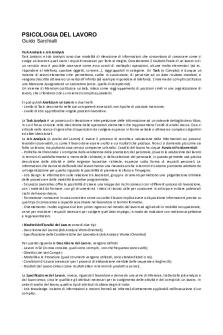
Task Analysis e Job Analysis
- 3 Pages
Popular Institutions
- Tinajero National High School - Annex
- Politeknik Caltex Riau
- Yokohama City University
- SGT University
- University of Al-Qadisiyah
- Divine Word College of Vigan
- Techniek College Rotterdam
- Universidade de Santiago
- Universiti Teknologi MARA Cawangan Johor Kampus Pasir Gudang
- Poltekkes Kemenkes Yogyakarta
- Baguio City National High School
- Colegio san marcos
- preparatoria uno
- Centro de Bachillerato Tecnológico Industrial y de Servicios No. 107
- Dalian Maritime University
- Quang Trung Secondary School
- Colegio Tecnológico en Informática
- Corporación Regional de Educación Superior
- Grupo CEDVA
- Dar Al Uloom University
- Centro de Estudios Preuniversitarios de la Universidad Nacional de Ingeniería
- 上智大学
- Aakash International School, Nuna Majara
- San Felipe Neri Catholic School
- Kang Chiao International School - New Taipei City
- Misamis Occidental National High School
- Institución Educativa Escuela Normal Juan Ladrilleros
- Kolehiyo ng Pantukan
- Batanes State College
- Instituto Continental
- Sekolah Menengah Kejuruan Kesehatan Kaltara (Tarakan)
- Colegio de La Inmaculada Concepcion - Cebu



